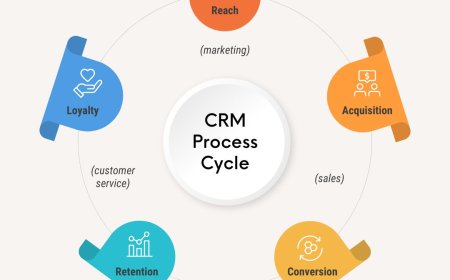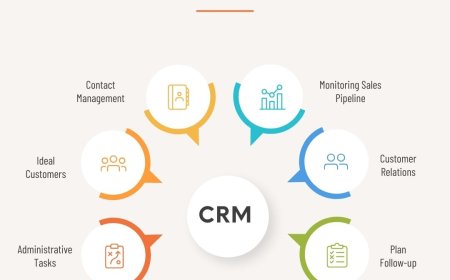Roadmap to a Successful XDR Rollout: A Step-by-Step Guide for Security Teams
outline a clear and actionable roadmap to help security teams plan and execute a successful XDR rollout.

Extended Detection and Response (XDR) is rapidly becoming a cornerstone of modern cybersecurity strategies. By unifying threat detection and response across endpoints, networks, cloud workloads, and email systems, Extended Detection and Response offers unprecedented visibility and faster threat mitigation. However, rolling out XDR effectively requires more than just selecting the right vendorit demands a strategic roadmap aligned with your organizations security posture, IT environment, and business goals.
In this blog, we outline a clear and actionable roadmap to help security teams plan and execute a successful XDR rollout.
1. Define Your XDR Objectives and Scope
Before diving into implementation, its essential to clarify your goals for adopting XDR. Consider:
-
Are you aiming to reduce mean time to detect (MTTD) and respond (MTTR)?
-
Do you want centralized visibility across siloed tools?
-
Are you preparing for compliance audits or enhancing threat hunting?
Action Steps:
-
Conduct a security gap analysis
-
Identify the assets, data sources, and attack surfaces you want XDR to cover
-
Engage stakeholders from IT, DevOps, compliance, and executive teams
2. Assess Your Current Security Stack
XDR is most effective when integrated seamlessly with existing tools and telemetry sources.
Evaluate:
-
Existing EDR, SIEM, NDR, firewall, and email security solutions
-
Logging and data collection capabilities
-
API integrations and data interoperability
Action Steps:
-
Document all tools and their current roles
-
Identify overlaps and redundancies
-
Determine which tools will be replaced, integrated, or retained
3. Choose the Right XDR Platform
Not all XDR platforms are created equal. Select one that aligns with your environment and goals.
Key Considerations:
-
Open vs. Native XDR: Do you prefer integration flexibility or a unified vendor ecosystem?
-
Use case alignment: Threat detection, response automation, compliance reporting
-
Integration capabilities: APIs, third-party support, cloud-native compatibility
-
Vendor reputation and support
Action Steps:
-
Evaluate multiple vendors through PoCs
-
Test compatibility with your tools and data flows
-
Involve security analysts and architects in the selection process
4. Build a Cross-Functional Implementation Team
An XDR rollout requires collaboration across departments.
Key Roles:
-
Security analysts and incident responders
-
IT and network operations teams
-
Compliance officers
-
Vendor implementation support
Action Steps:
-
Assign roles and responsibilities
-
Define communication channels
-
Schedule regular project status reviews
5. Plan Data Onboarding and Integration
XDR thrives on data. The more relevant telemetry it ingests, the better its detection and response capabilities.
Steps to Take:
-
Onboard endpoint, network, cloud, and identity data
-
Normalize and map data for correlation and analytics
-
Ensure log retention policies align with compliance requirements
Tips:
-
Start with high-priority data sources (e.g., EDR, firewalls)
-
Monitor data ingestion performance and cost
-
Validate integrity and timeliness of data
6. Customize Detection Rules and Playbooks
XDR platforms come with out-of-the-box detection rules and automated response playbooks. But customization ensures they reflect your specific threats and workflows.
Action Steps:
-
Review and tune detection thresholds to reduce false positives
-
Build automated workflows for common incidents (e.g., phishing, lateral movement)
-
Align playbooks with your incident response plan
7. Conduct Testing and Simulation
Before going live, simulate real-world attack scenarios to validate detection and response capabilities.
Include:
-
Red team exercises
-
MITRE ATT&CK-based simulations
-
User behavior anomaly tests
Action Steps:
-
Refine rules and playbooks based on outcomes
-
Document findings and update your incident response process
-
Train analysts to use the new workflows
8. Train Your SOC Team
Even the most advanced XDR solution is only as effective as the people using it.
Training Areas:
-
Platform navigation and query language
-
Alert triage and threat hunting workflows
-
Automation and playbook management
Action Steps:
-
Conduct hands-on training sessions
-
Create XDR SOPs and knowledge base articles
-
Encourage continuous learning with sandbox environments
9. Monitor, Measure, and Optimize
Rollout doesn't end at deployment. Continuous monitoring and improvement are essential.
Key Metrics:
-
MTTD and MTTR
-
False positive/negative rates
-
Analyst workload and alert fatigue
-
Threat coverage and detection efficacy
Action Steps:
-
Set benchmarks and SLAs
-
Analyze incident post-mortems to identify gaps
-
Continuously tune detection rules and update response workflows
10. Scale Gradually and Strategically
Start smallthen scale based on lessons learned.
Tips:
-
Begin with a pilot deployment in a controlled environment
-
Gradually extend coverage across business units and geographies
-
Prioritize high-risk assets and critical infrastructure
Conclusion
Rolling out XDR is not just a technology deploymentits a transformation of your security operations. By following a structured roadmap, involving the right teams, and prioritizing integration and automation, you can maximize the value of XDR and drastically improve your threat detection and response capabilities.
An effective XDR rollout takes planning, but the payoff is a more resilient, adaptive, and unified security posture.































